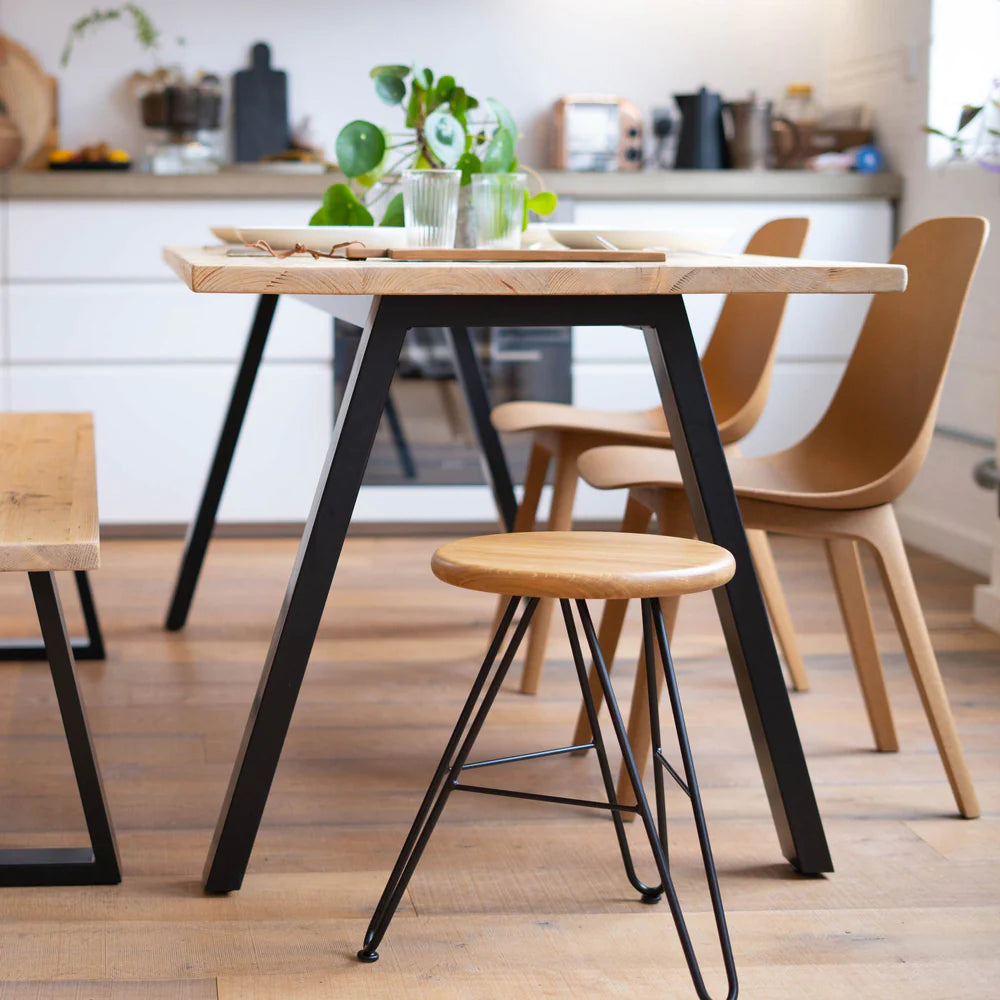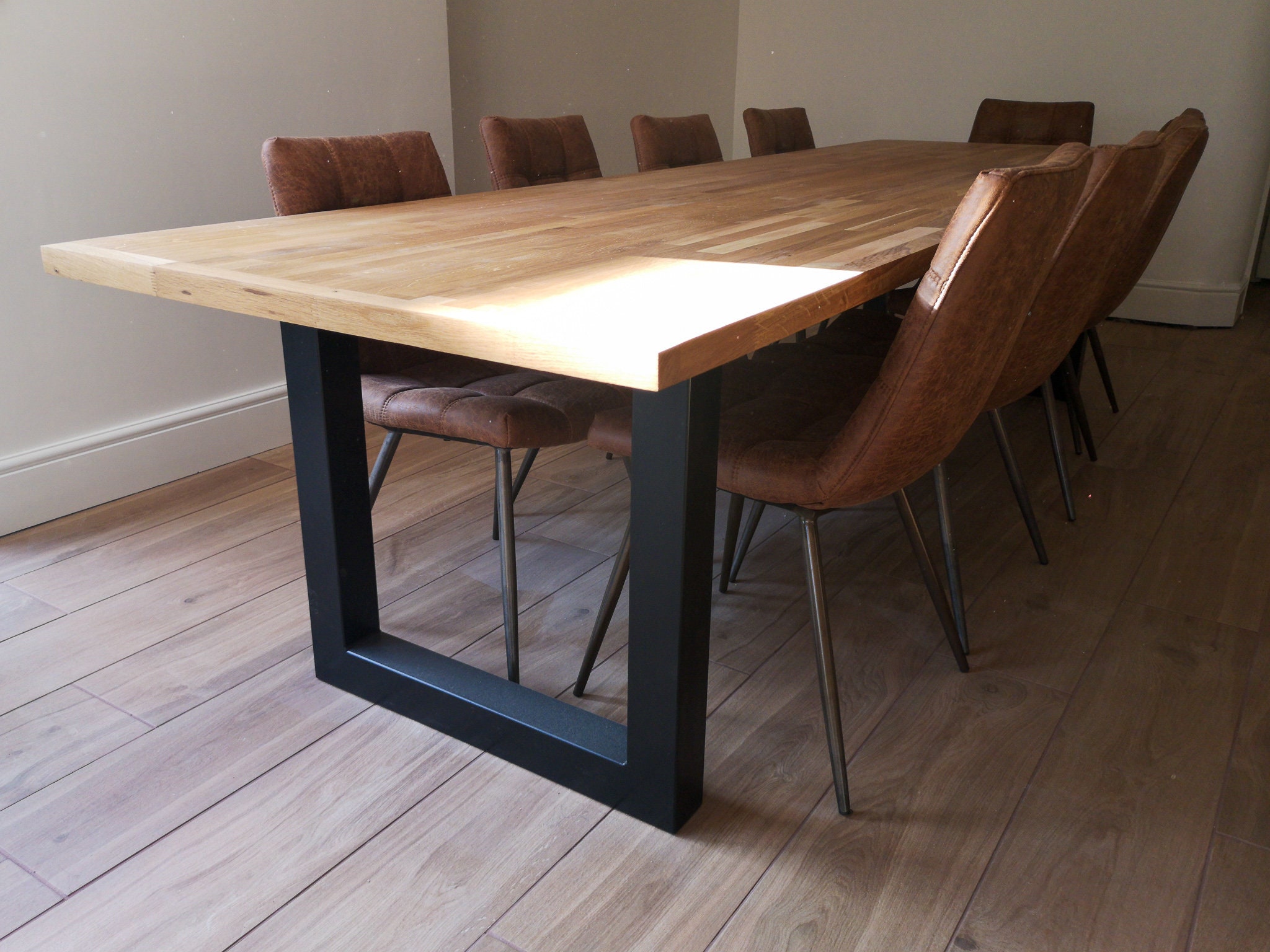Top Fads in Dining Room Table Legs to Boost Your Dining Space
A Comprehensive Look at Dining Table Leg Styles: Locating the Perfect Match
Selecting the right table leg design is important for both aesthetic allure and sensible performance. Conventional 4 legs use timeless elegance and security, while the pedestal base gives increased legroom and a modern-day appearance. For those with larger tables, trestle legs make certain strong support, whereas barrette legs introduce a mid-century modern-day ambiance with their minimalist style. The x-shaped legs blend modern style with boosted stability. Each of these alternatives brings special benefits, making the selection greater than simply a matter of preference. Explore better to find which design completely enhances your dining area and way of life.
Conventional 4 Legs
Among the different types of dining table leg styles, the traditional four-leg layout continues to be a classic selection for numerous households. Four legs supply well balanced support, guaranteeing the table stays stable and qualified of birthing significant weight (dining room table legs).
From a visual point of view, the typical four-leg design can be quickly adjusted to numerous indoor styles. Whether crafted from wood, steel, or a mix of materials, these legs can be elaborately carved, sleek and minimalistic, or anything in between. Their versatility permits them to match both rustic and contemporary setups flawlessly.
In addition, the simple structure of the four-leg layout assists in ease of activity and placement within a room. Unlike even more complicated bases, this style lessens obstructions, giving adequate legroom for diners. In recap, the standard four-leg dining table leg design marries withstanding beauty with useful capability, making it an astute selection for those seeking both kind and function in their eating furnishings.
Pedestal Base
Commonly commemorated for its stylish and space-efficient style, the stand base is a recognized choice to the traditional four-leg setup in dining table leg designs. Without corner legs, diners are afforded higher flexibility of activity, making it an optimal option for round and oblong tables that advertise more intimate and inclusive celebrations.
The central column itself offers a canvas for detailed styles and creative expressions, including an aspect of aesthetic interest under the table. In recap, the pedestal base integrates capability with style, making it an improved and sensible choice for diverse dining settings.
Trestle Legs
Trestle legs supply a robust and timeless structure for eating tables, characterized by their straight cross-bracing and sturdy assistance beams. Stemming from medieval times, this style has advanced yet kept its important framework, making it a perennial favorite in both typical and modern settings. The central trestle beam of light, typically sustained by two or even more upright blog posts, offers remarkable security, permitting larger table sizes without the requirement for additional legs.
A substantial advantage of trestle leg tables is the adequate legroom they supply. Unlike tables with four edge legs, the absence of obstructions at the table's sides gives unimpeded area for chairs and restaurants, improving convenience and accessibility. This makes trestle tables suitable for accommodating larger events, whether in an eating room or a banquet hall.
From rustic farmhouse to sleek contemporary styles, trestle legs can be personalized to fit specific tastes. Their enduring appeal and functional benefits make trestle legs a compelling choice for those looking for both style and practicality in their dining table.
Hairpin Legs

The charm of barrette legs hinges on their simplicity and convenience - dining room table legs. Available in visit this web-site an array of products, including steel and brass, they can be completed in countless colors to complement various interior styles. Whether coupled with a rustic wood tabletop or a contemporary glass surface area, barrette legs easily This Site blend capability with a touch of classic charm
Sturdiness is an additional notable attribute of hairpin legs. In spite of their fragile look, these legs are engineered to bear substantial weight, making sure the dining table remains steady and safe. In addition, they are reasonably very easy to install, making them a popular choice for DIY lovers and expert furniture makers alike.
X-Shaped Legs

Created from products such as steel, wood, or a combination of both, X-shaped legs can be tailored to match different style choices. Steel legs often provide a streamlined and industrial feel, ideal for loft-style houses and contemporary eating rooms.
In addition, the engineering behind X-shaped legs guarantees even weight distribution, lessening the threat of tottering and boosting durability. This makes them particularly well-suited for larger dining tables that require additional support. Basically, X-shaped legs mix functional engineering with modern looks, making them an ageless option helpful resources for varied dining environments.
Conclusion
A detailed understanding of table leg designs exposes the distinct qualities and benefits of each layout. Typical 4 legs use security and ageless appeal, while pedestal bases give legroom and a streamlined appearance. Trestle legs make certain durable support for larger tables, and barrette legs present a mid-century contemporary aesthetic. X-shaped legs combine modern design with improved stability. Choosing the appropriate leg design guarantees both functional and aesthetic fulfillment in any dining area.